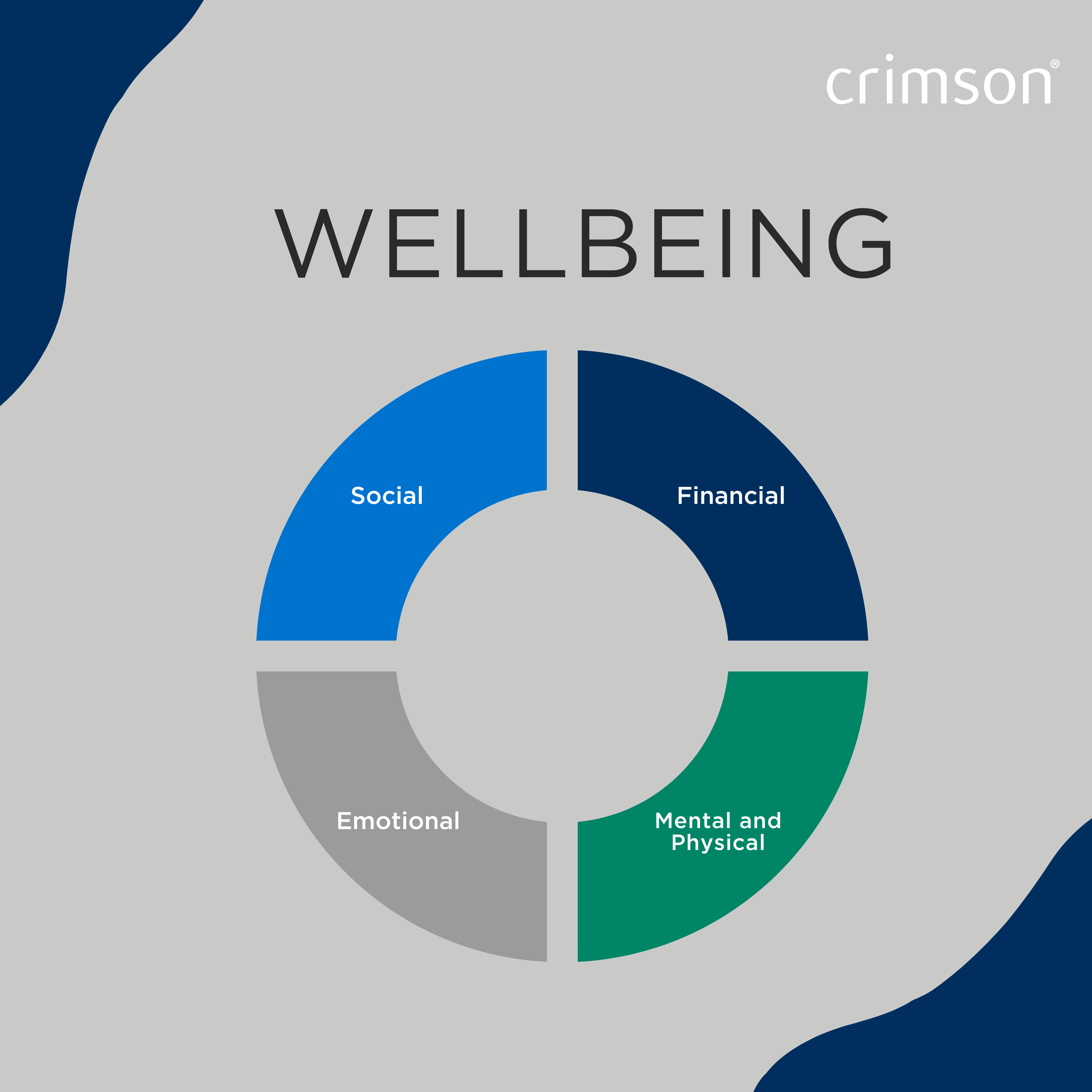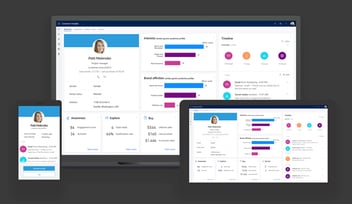Why companies are putting employee wellbeing first
Over the years, the Employee Value Proposition or (EVP) has evolved and grown in importance. An organisation's EVP comprises several factors: compensation, benefits, career opportunities, the working environment, and culture. COVID-19 has enabled many companies to pilot working from home and introduce flexible working. Crimson's report on the pandemic's impact revealed that over 70 percent of IT leaders said their team is now more likely to work from home and they’re more likely to hire remote workers.
With more companies advertising flexible working, there is likely to be increased competition amongst employers eager to secure the best talent on the market, but what does the workforce want? According to job search engine, Adzuna, wellbeing support is one of the top benefits that will attract talent during 2021, including work from home allowances and childcare. Other popular perks included online exercise classes, ergonomic office equipment and meditation apps.
Whether it's due to burnout or the loneliness of remote working, 2020 encouraged employers to take more responsibility for their people's wellbeing. A recent study of FTSE 100 companies uncovered that the organisations prioritising mental health and wellbeing outperform their competitors by ten percent. However, this month's LinkedIn poll indicates that over a third of employers are yet to invest in wellbeing support, and 11 percent of workers are unsure how their employer can support their wellbeing.
.png?width=2820&name=Poll%20results%20(1).png)
Similar research by Robert Half suggests that only half of employers (48 percent) have tools to support wellbeing in the workplace, whilst according to the CIO Survey by Harvey Nash, around 84 percent of technology leaders are concerned with the mental health of their team.
Communicating a caring culture and relevant benefits will be key to attracting and retaining talent in 2021. Let’s take a look at wellbeing and what you and your employer can do to support the wellbeing of your people.
What is workplace wellbeing?
Workplace wellbeing can be broken down into four key elements.

-
Social: A black tie event, company away days, and virtual coffees.
-
Financial: Access to discounts and travel cards, salary sacrifices and financial advice.
-
Mental and Physical: Generous or unlimited annual leave, gym memberships or online exercise classes, counselling, flexible working, and access to a meditation app.
-
Emotional: Recognition, sabbaticals, mentoring and on demand training.
Real world examples
- Amazon enable new parents to share paid leave with their partner
- Timberland offers 40 hours of paid leave for voluntary work
- Deloitte offer two sabbatical programs for employees
- Eventbrite offices feature nap rooms
- Dropbox’s ‘no meeting Wednesdays’ provide a much-needed break from meetings by allowing employees to have a whole day to concentrate on other tasks
- Gymshark has an on-site chef.
Eight great ideas to incorporate
-
Wellness days
-
Home office equipment
-
Care packages and gifts
-
Mindfulness classes
-
Fitness challenges
-
Income protection
-
Critical illness cover
-
Health screening.
Tech providers lead the way with built-in intelligence tools that businesses can utilise. Microsoft enables Outlook users to schedule 50-minute slots to ensure regular breaks. Microsoft Teams encourages quiet hours where notifications are hidden outside of office hours, and they are partnering with Headspace to offer mindfulness sessions.
According to research by Aetna International, just under three-quarters (71 percent) of employees believe their employer could help them manage their physical health by giving them access to an app. The Co-op recently launched a new set of benefits for front-line workers, giving them access to Gympass, including mental health exercises, nutrition support, personal training, live classes, and access to Gyms across the UK.
Seven steps you can take as an IT leader
- Take care of your wellbeing before you help others
- Use a ‘pulse survey’ to ask your team how they are, and work with HR to find the right tech to help your organisation support wellbeing
- Empathise with your colleagues, and open about your challenges
- Recognise the signs - here are some helpful tips to help you recognise when your team might be struggling - IT burnout: 7 ways to spot and help overwhelmed staff | CIO
- Share resources with your team or helpful tools like Cortana that can help to reduce their workload
- Cut down on unnecessary meetings to give your team more time to work on their projects
- Reduce emails and use collaborative workspaces where your team can submit and review comments.
Don’t forget employees are like customers; they want to receive perks if they’re going to remain loyal. Employees want to feel a sense of purpose and that you care about more than just their output. The trick is to ask them what they want and track the usage. Workplace welling is ultimately about how work contributes to the overall health and happiness of employees. A wellbeing strategy will help you reduce burnout and absence rates as well as energise and retain staff. It’s also more important than ever to communicate your Employee Value Proposition in your advertisements to secure the best candidates.
More resources
Perkbox_Wellbeing_Strategy_Guide_to_Unleash_Employee_Happiness_in_2021.pdf
Perkbox_Ebook_Top_5_HR_Trends_for_2021.pdf
Crimson is an IT consultancy, an IT solutions provider, an IT recruitment agency, and a Microsoft Gold Partner operating across the UK.


